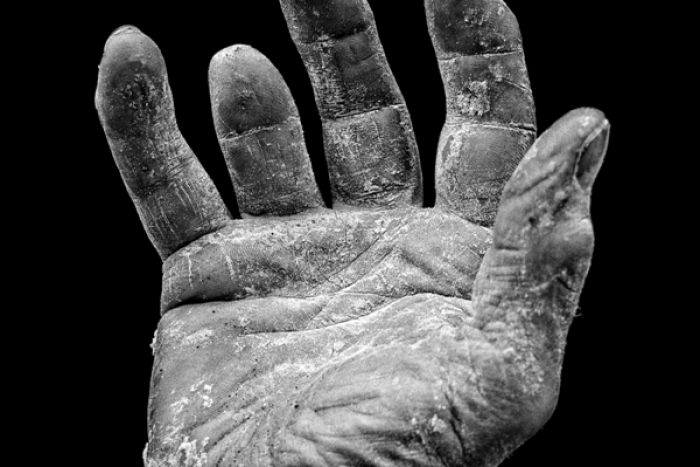After reading through the exam paper and gaining an understanding of what ‘Variation and Similarity’ can mean I have generated a few ideas which I could explore in this project:
- Hands – through exploring hands I would be looking at the
 different size and shape of people’s hands and especially the different lines in the palms of hands and possibly fingerprints. This could product some abstract up close photographs or photographs showing the whole hand. I could experiment with colouring the hands with ink in order to emphasise the features of the hands. I could also experiment with printing the photographs then putting materials such as coloured string along the hand lines to emphasise the lines. This could lead me to look at other natural lines on the human body including veins. An artist that I could look at relating to this subject is Tim Booth who did a project titled ‘A Show of Hands’.
different size and shape of people’s hands and especially the different lines in the palms of hands and possibly fingerprints. This could product some abstract up close photographs or photographs showing the whole hand. I could experiment with colouring the hands with ink in order to emphasise the features of the hands. I could also experiment with printing the photographs then putting materials such as coloured string along the hand lines to emphasise the lines. This could lead me to look at other natural lines on the human body including veins. An artist that I could look at relating to this subject is Tim Booth who did a project titled ‘A Show of Hands’.  Variations – exploring variations would allow me to look at a range of different subjects including different models of cars or buildings. At the same time I could look at similarities between these subjects or possibly both variations and similarities in order to show a contrast. This could involve me using photoshop to create a mass repetition effect of these subjects to portray the idea of mass production. One photographer that I can draw inspiration from for this is Lewis Bush as he did work similar to what I am thinking of on his work ‘Metropole’
Variations – exploring variations would allow me to look at a range of different subjects including different models of cars or buildings. At the same time I could look at similarities between these subjects or possibly both variations and similarities in order to show a contrast. This could involve me using photoshop to create a mass repetition effect of these subjects to portray the idea of mass production. One photographer that I can draw inspiration from for this is Lewis Bush as he did work similar to what I am thinking of on his work ‘Metropole’- Handwriting – this is unique to every person as everyone has learnt to hold a pen or write specific characters in a certain way. This means that this will allow me to show the differences through text written by a variety of people. I could also look at asking the subjects to write about what ‘variation and similarity’ means to them – similar to what Lewis Bush did in his work on ‘Trading Zones’.
- Personal items – everyone has pieces of clothing that make them individuals and everyone will carry different items around in their bag or pack a different lunch for school. There is an endless combination of clothing items or foods to bring to school and so looking at what people choose to wear or like to eat will show differences or similarities within peoples tastes and personalities. This has links to Huang Qingjun.
- Individual features – genes create different variations of different features within people and these features can be enjoyed by people if they believe that it is one of their strong points or they can see it as an imperfection. By looking into these characteristics that make people unique I can show the range of varieties that genes can create in people.
- Car boot sale – when visiting a car boot you are able to see a wide range of different possessions of people. Everyone at a car boot will be selling different items for different prices in different conditions and often the items that someone is selling can give an insight into who they are as a person. This would link to Huang Qingjun’s work on ‘Jiading’ in which he would photograph rural citizens of China with all of their personal belongings in order to show who they are and how they live.










